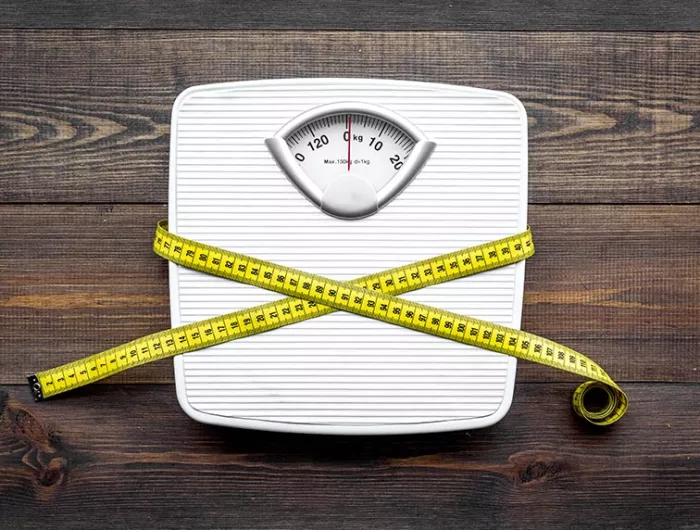It's not just weight, but your waist that matters

9dreamstudio - stock.adobe.com.
A woman’s waist may better predict her risk of type 2 diabetes than her weight, according to a 2019 study. Researchers tracked roughly 136,000 postmenopausal women in the study for nearly 15 years.
Waist size predicted diabetes risk even better than weight
Women with a waist between 31 and 35 inches had a 59 percent higher risk than those with a smaller waist. A woman with a waist over 35 inches had three times the risk compared to a woman with a waist under 31 inches.
A large waist was even worse for women with Asian ancestry. Their risks were roughly 2½ times higher in the 31-to-35-inch range and nearly 4½ times higher if over 35 inches.
Why a larger waist isn't healthy, no matter what your weight
An oversized waist doesn’t bode well, even if you’re in the “healthy weight” range.
“If someone is keeping their weight about the same but their waist is increasing—a very common pattern in middle-aged men—that can be a problem,” says Walter Willett, professor of epidemiology at the Harvard T.H. Chan School of Public Health.
When researchers pooled data on roughly 650,000 men and women, the risk of dying over nine years rose significantly for every additional two inches of waist, even in people who weren’t overweight.
“If your abdominal circumference increases by more than two inches, that means you’re out of balance,” says Willett.
A large waist matters in part because it’s an unambiguous sign of extra body fat
“Our methods of measuring obesity are not perfect,” notes Willett. “We know that for the same height and weight, some people have more muscle while others have more fat. But if someone has a big belly, we know that it’s not due to a big muscle sitting there.”
What’s more, a larger waist could signal a bigger deposit of the visceral fat that’s buried deep in the belly, which is more harmful than the subcutaneous fat that’s just under your skin.
The risks of visceral fat
“Visceral fat accumulation is more closely linked to developing type 2 diabetes and coronary heart disease,” says Ulf Risérus, associate professor of clinical nutrition and metabolism at Uppsala University in Sweden. Why?
“The main theory is that visceral fat cells release a lot of fat, which goes directly to the liver, where it causes metabolic disorders,” says Risérus.
Visceral fat may also release more inflammatory proteins than subcutaneous fat.
“Visceral fat is linked to insulin resistance both in the liver and in other parts of the body,” says Risérus.
(When you have insulin resistance, your insulin becomes less able to move blood sugar into cells. That often leads to type 2 diabetes.)
“And a fatty liver produces more triglycerides,” adds Risérus, “which can increase the risk of cardiovascular disease in the long term.”
When do you gain visceral fat?
You gain visceral fat when your subcutaneous fat can’t cope.
“When people start gaining unhealthy amounts of subcutaneous fat, the fallback is to start putting any more fat into visceral fat cells,” says Michael Jensen, director of the Obesity Specialty Council at the Mayo Clinic.
How much is too much? It varies.
“Some people can gain a lot of subcutaneous fat, and it functions perfectly normally,” says Jensen. “And other people gain maybe just four or five pounds, and all of a sudden, it’s completely dysfunctional.”
Worse yet, if the visceral fat cells reach their limit, any more fat gets stashed in muscle, the liver, and elsewhere.
“Those organs can’t package the fat very well, so it can interfere with cell functions,” says Jensen.
What to do
Keep tabs on your waist, not just your weight. Here's how to measure your waist circumference:

- Stand and place a tape measure around your middle, just above your hipbones.
- Make sure the tape is horizontal around your waist.
- Keep the tape snug around your waist, but not compressing your skin.
- Measure your waist just after you breathe out.
Photos: 9dreamstudio/stock.adobe.com (top), Centers for Disease Control and Prevention (bottom).
The Latest by Bonnie
A snapshot of the latest research on diet, exercise, and more
Weight and Health

Prediabetes: What may—and may not—help reverse it?
Weight and Health

A snapshot of the latest research on diet, exercise, and more
Preventing Disease

The good fats
Healthy Eating

Play the ingredient game!
Food Labeling





